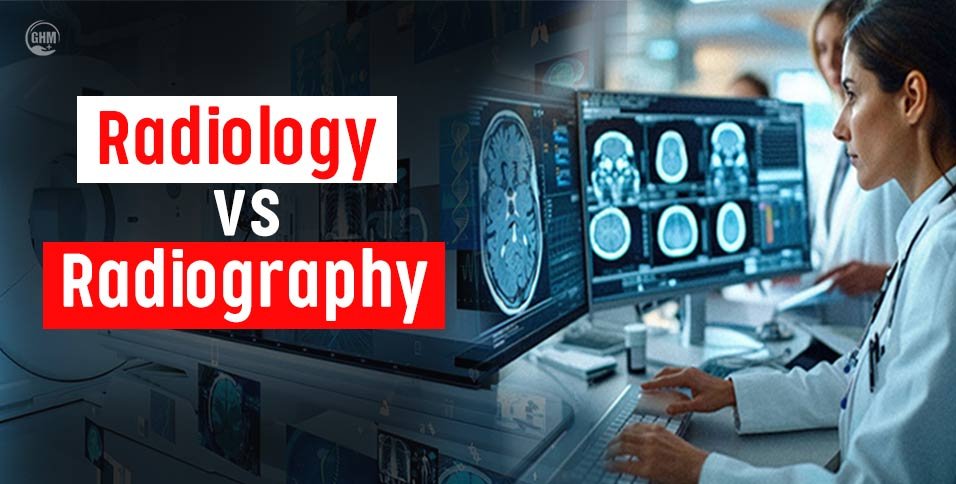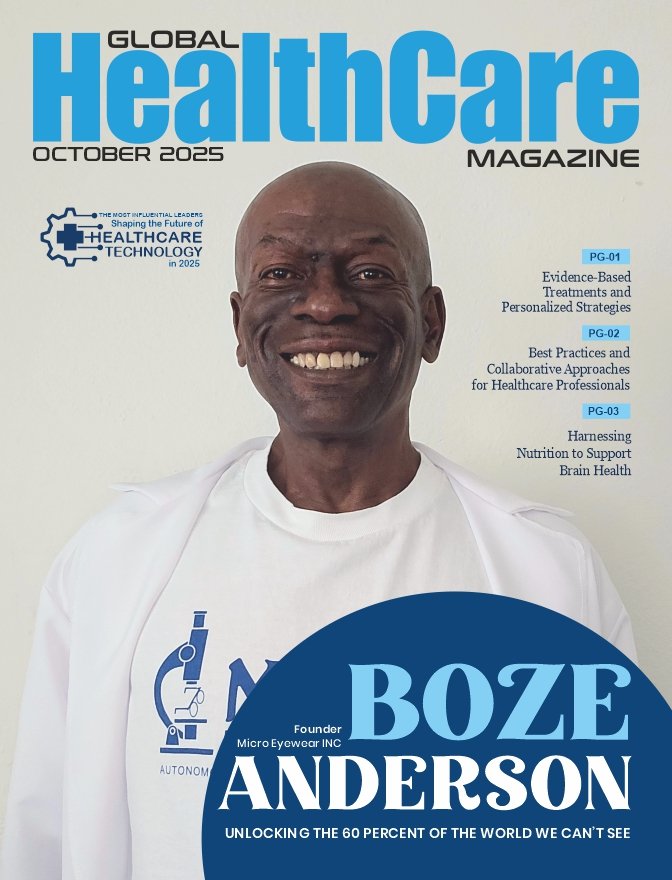Ever found yourself Googling Radiology vs Radiography, thinking they’re just two fancy terms for taking X-rays? You’re not alone. Thousands of students and even working professionals make the mistake of using them interchangeably — and that confusion can cost them years of effort, thousands of dollars, and the wrong career path.
Let’s be clear:
Radiology is a medical specialty. It’s about diagnosing diseases, making treatment decisions, and interpreting complex imaging scans. It takes a medical degree, years of residency, and the weight of clinical responsibility.
Radiography, on the other hand, is about operating the imaging equipment. It’s hands-on, technical, and gets you into the healthcare field faster — with shorter courses, direct patient interaction, and quicker employment.
But here’s the catch — the difference isn’t just in the job title, it’s in the lifestyle, salary, education, and growth potential. And if you’re even slightly unclear about what each one truly offers, you might end up choosing a path that doesn’t match your goals.
So, if you’re at that critical decision point — asking what’s right for you — this deep dive into Radiology vs Radiography will give you the clarity you need.
Radiology vs. Radiography: A Quick Overview
| Characteristic | Radiology | Radiography |
| Primary Role | Diagnose diseases through image interpretation | Captures medical images using imaging equipment |
| Required Education | MD/DO + Residency (and often Fellowship) | Associate’s or Bachelor’s in Radiologic Technology |
| Certification | Board Certified by ABR or equivalent | Certified by ARRT or equivalent |
| Patient Interaction | Limited, mostly consultative, or during procedures | Direct and hands-on during imaging |
| Primary Tool | Medical expertise and diagnostic training | Imaging equipment (X-ray, MRI, CT scanners) |
| Work Environment | Hospitals, diagnostic labs, and private clinics | Hospitals, imaging centers, and outpatient clinics |
| Career Progression | Subspecialties (e.g., Interventional, Neuro, Pediatric) | Specializations (e.g., MRI, CT, Mammography) |
The Salary Showdown: A Look at the Numbers
- Radiologist Salary
When we talk about radiology vs radiography, one of the sharpest contrasts appears in their salary range. Radiologists, being licensed medical doctors, fall into one of the highest-earning categories in U.S. healthcare. According to Medscape’s 2023 compensation report, the average annual income for radiologists sits between $437,000 and $498,000, often crossing the half-a-million mark with bonuses and profit-sharing. Some even report earnings closer to $600,000, especially those with advanced subspecialties like interventional radiology or neuroradiology.
So, why such high numbers? It’s not just the degree—it’s the responsibility. Radiologists spend more than ten years in training, starting with a medical degree, followed by years of residency, and oftena fellowship. Their role involves interpreting complex scans and making critical, life-impacting decisions based on subtle image differences. Their day often includes high-stakes analysis, working alongside surgeons, oncologists, and ER teams. In short, their job is less about the “picture” and more about the “meaning behind the picture.”
- Radiographer Salary
Now let’s flip the coin and talk about radiography. Radiographers, or radiologic technologists, may not command six-figure salaries right away, but they do hold an essential role in patient care. According to the U.S. Bureau of Labor Statistics (May 2024), the median salary for radiographers is around $77,660. Entry-level professionals often start between $61,000 and $65,000, while the top 10%—those with specialized certifications or years of experience—can earn upwards of $106,000.
While the salary is notably lower than that of radiologists, the educational investment is far more accessible. Radiographers typically complete an associate’s or bachelor’s degree in radiologic technology, with most entering the workforce within 2–4 years. They interact directly with patients, handle sophisticated imaging equipment, and ensure that every image captured meets the standard needed for diagnosis. Think of them as the skilled photographer who makes sure the picture is clear, sharp, and technically flawless—because that’s what the radiologist depends on.
Job Growth and Demand: The Future is Bright (for Both)
- Radiologist Outlook
When comparing radiology vs radiography, it’s natural to ask which path offers more future stability. For radiologists, the Bureau of Labor Statistics (BLS) projects a 3.6% job growth between 2023 and 2033. While that number may seem small, it’s steady—and here’s why that matters.
The demand for radiologists is closely tied to the aging population, who require frequent imaging for early diagnosis. Add to that the rise in chronic conditions like heart disease and cancer, and it’s clear that the need for expert interpretation is only growing. Imaging tools are getting more advanced. But the human eye—and more importantly, the human judgment of a trained radiologist—is still vital.
Subspecialties like interventional radiology and neuroradiology are growing even faster. These areas deal with complex cases and newer, less invasive treatments. Even with a modest growth rate, over 1,200 radiologist jobs are expected to open up in this decade.
- Radiographer Outlook
On the other side of the radiology vs radiography equation, radiographers are projected to see faster growth. The BLS estimates a 6% job growth from 2023 to 2033. That’s nearly double the rate for radiologists.
Why the boost? Radiographers are the hands-on experts behind every scan. As more hospitals adopt diagnostic imaging for early detection, the demand for skilled radiographers keeps climbing. They’re also essential in outpatient care, where imaging plays a bigger role than ever.
So, whether you’re drawn to diagnosis or imaging, both paths offer strong job prospects. The tools may evolve—but the people behind them remain irreplaceable.
The Path to Earning: Education and Time Investment
- Radiologist’s Investment
One of the most critical differences lies in how long it takes to enter the profession. Becoming a radiologist is not a quick journey. It typically starts with 4 years of undergraduate study, followed by 4 years of medical school. After that, there’s a residency program that lasts 4 to 6 years, and in many cases, an additional 1 to 2-year fellowship for specialization.
This means it can take 12 to 14 years from high school graduation to full professional practice. That’s over a decade of intense training. Yet, every year counts toward building a deep understanding of the human body, disease processes, and advanced medical imaging. It’s like training a pilot, but instead of flying planes, radiologists are guiding treatment decisions that can save lives.
While this path requires time, money, and commitment, it leads to one of the most respected and highly paid roles in healthcare—and rightly so, given the responsibility carried with each diagnosis.
- Radiographer’s Investment
In the radiology vs radiography discussion, radiographers offer a much faster route into the workforce. Most radiographers complete either a 2-year associate’s degree or a 3 to 4-year bachelor’s degree in radiologic technology. Unlike the long medical track of radiologists, radiographers can be ready for employment in just a few years.
This makes radiography an appealing option for students looking to start earning earlier. During their education, they receive hands-on training in operating imaging equipment, ensuring patient safety, and capturing high-quality images. Although they do not diagnose illnesses, they play a vital role in the imaging process by providing radiologists with the visual data they need.
Think of it this way: if a radiologist is the one solving the puzzle, the radiographer is the one who provides the puzzle pieces—clear, accurate, and timely. This shorter path doesn’t mean it’s any less important; it simply reflects a different focus, with an emphasis on technical skill and patient interaction.
The Day-to-Day: Different Work, Different Rewards
- Radiographer’s Work
In the ongoing conversation around radiology vs radiography, one must first understand the environment a radiographer operates. These professionals are often the first point of contact in the medical imaging chain. They don’t just operate machines—they guide patients through unfamiliar, often intimidating procedures. They adjust the positioning, explain the process, and ensure the images captured are medically usable. Every image taken reflects not just technical know-how but also a moment of empathy and precision under pressure.
Radiographers are present in ERs, wards, outpatient clinics, and even in surgical settings. Their hands may never write a diagnosis, but their hands create the evidence for it. Their decisions—on angles, settings, and timing—can determine whether a fracture is seen or missed, whether a tumor is caught early or overlooked. It’s hands-on work that’s as much about human connection as it is about technological expertise.
- Radiologist’s Work
Now flip the frame. A radiologist, though removed from the bedside, enters the patient’s body in a different way—through the image. Their job is not to take the picture but to interpret what it says. In this battle of radiology vs radiography, the radiologist brings in years of medical education, anatomy knowledge, and pattern recognition skills to make sense of shadows, densities, and contrasts. They aren’t in the room, but they’re often the first to know what’s wrong.
This is not a routine desk job—it’s detective work at a cellular level. A single scan might reveal the early onset of cancer, a hidden bleed in the brain, or a disease progression no one suspected. Radiologists collaborate with other doctors, issue critical reports, and increasingly use AI and advanced software—but the final judgment is still theirs. Their reward is not in the image, but in the clarity they provide when lives depend on precision.
Specialization and Career Progression
- Radiographer’s Specializations
Radiographers can quickly grow in their careers by focusing on specific imaging technologies. For example, some choose to specialize in MRI or CT scanning. These roles need more training but offer much higher pay, often reaching close to $100,000 or more per year. Others may work in mammography, PET scanning, or even assist in procedures through interventional radiology. Each of these paths brings a higher level of responsibility, deeper skillsets, and more value in the job market.
Specializing not only boosts income but also improves job security. Hospitals prefer hiring technologists who can handle complex machines with confidence. Additionally, radiographers with advanced ARRT certifications stand out and move up faster. As new tools and hybrid systems like PET/CT grow in use, so does the demand for skilled specialists. Even with AI, skilled radiographers will remain essential. Why? Because machines need trained hands and sharp human judgment to work well in real-life healthcare settings.
- Radiologist’s Subspecialties
Radiologists often choose to go even further in their field by doing a fellowship after residency. This helps them become true experts in areas like brain imaging (neuroradiology), cancer care (radiation oncology), or image-guided procedures (interventional radiology). These subspecialties often push salaries beyond $500,000 per year, especially in fields that need high-level decision-making or hands-on procedural skills.
This deep training creates strong job security and global demand. Hospitals everywhere are looking for subspecialists who can make sense of complex medical cases. For example, a pediatric radiologist knows exactly what to look for in a child’s scan, while an interventional radiologist can treat blocked arteries without open surgery. These skills can’t easily be replaced by automation. Moreover, as imaging gets more complex and AI tools become common, subspecialists will play a key role in managing technology and guiding treatments with high accuracy. Simply put, the deeper the skill, the greater the value—and the more future-proof the career.
Key Takeaways
When I first came across the difference between radiology and radiography, it felt like a surface-level comparison — a doctor vs a technician. But digging deeper reveals it’s actually about two entirely different journeys in healthcare. Radiology is about interpreting what others can’t see — it demands years of study, medical training, and a mind tuned to complex diagnosis. It’s not just a job, it’s a long-haul commitment to clinical authority and decision-making.
Radiography, meanwhile, offers quicker entry into the field. It’s hands-on, rooted in patient interaction, and driven by technical expertise. But it also requires clarity on where you want to head next — because while the path starts fast, long-term growth may need further specialization or upskilling.
So the real question isn’t just “which one is better” — it’s which one aligns with the kind of impact you want to make in healthcare. Are you drawn to the big picture or the fine details? Do you want to analyze or assist?
At its core, choosing between radiology and radiography is choosing between seeing the story or capturing it. And knowing that difference can shape not just your career, but your sense of purpose.



















